A quarter of century ago Lotus changed the way cars were built. Particular sorts of cars, hand built cars and those produced in low numbers, but all the same, change things the Lotus Elise most certainly did. It also changed the way some drivers viewed sports cars of the modern era, making many question what’s important when we get behind the wheel.
Elise was a small two-seater sports car, rear engined and rear driven, which tapped into an enthusiastic driver market ill served by mainstream car makers and in so doing saved the bacon of the famous marque first founded in 1948 by Colin Chapman.
See how many of these 25 facts about the remarkable little Elise you know.
1. What’s in a name?
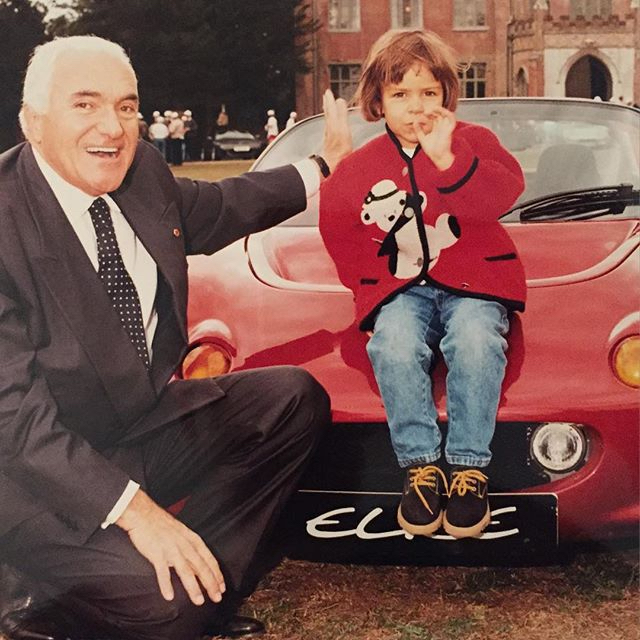
It was to have been called the 111 (pronounced One Eleven), which was the Lotus type number and also harked back to the 1956 Lotus Eleven and the 1962 Lotus 23. Patrick Peal, Lotus’ head of communications had even purchased a special number plate M111 LCL to be used on a disguised prototype, but at the last minute, Romano Artioli, Lotus chairman decided to change the name to Elise after his granddaughter, which caused a flurry of name registration and reprinting of launch material.
In spite of that, however, Peal reckons Elise was a better name: “In hindsight, Mr Artioli was right. Elise was the perfect name for the car, shared with a playful little girl – his granddaughter Elisa – who helped launch the car to the world”.
2. A car made out of double-glazed windows?
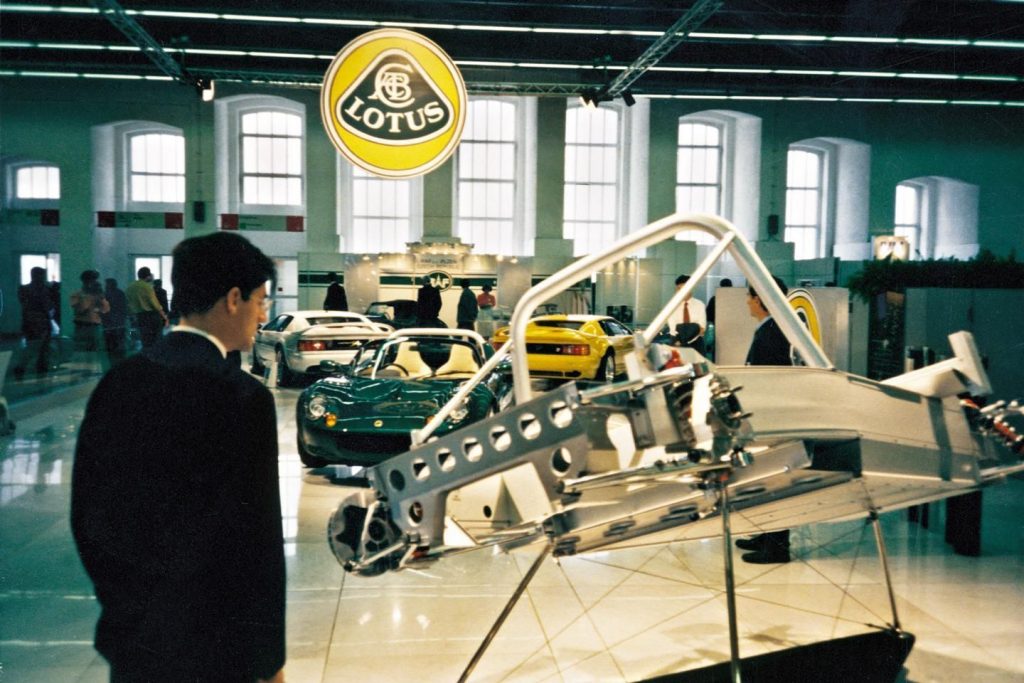
There had been aluminium cars before, some even using extruded aluminium sections in their make up. Audi’s space-framed A8 in 1994, for example, used a mix of sheet, cast and extruded sections glued, riveted and welded together, but Elise was the first car to use a similar technology to that used in extruded aluminium double glazing windows, bonded together. Developed by Lotus together with Ciba Polymers of Switzerland and Hydro Aluminium, of Denmark, the pioneering car building technology has been sold and licenced to a number of other car makers over the years.
3. K is for K-series
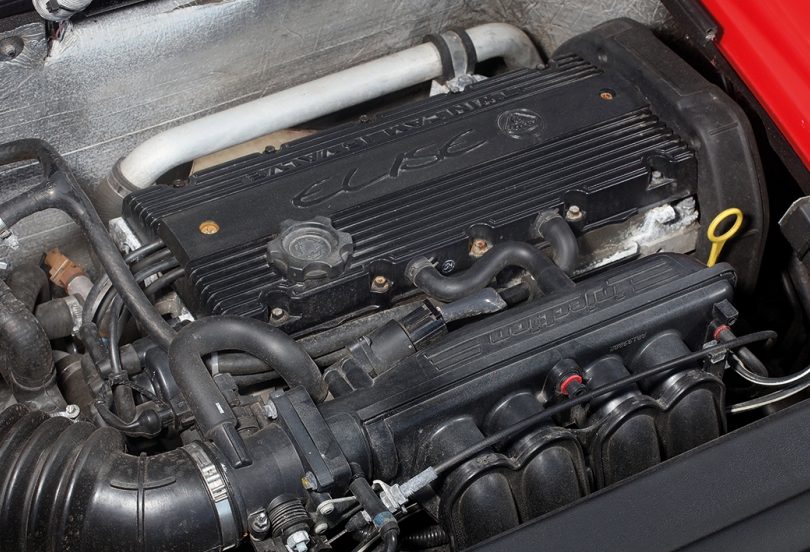
The Elise’s power unit, Rover’s remarkable little K-series engine was the unit that Margaret Thatcher couldn’t kill. The PM’s strategy to sell Rover meant all new projects were canned and the development team took home the prototype K-series units and drawings to hide them in their sheds until the coast was clear and development could continue. Its through-bolted configuration and low pressure sand casting construction meant the K-series got round a number of inherent problems of aluminium engines. It was a complicated engine though, demanding high standards of production, maintenance and precision of its bought-in components which weren’t always present, though these days there are solutions to the notoriously vulnerable head gaskets. Lotus even helped improve the unit when Nanjing Motors bought the rights to the K-series in 2005.
4. Sintered brakes
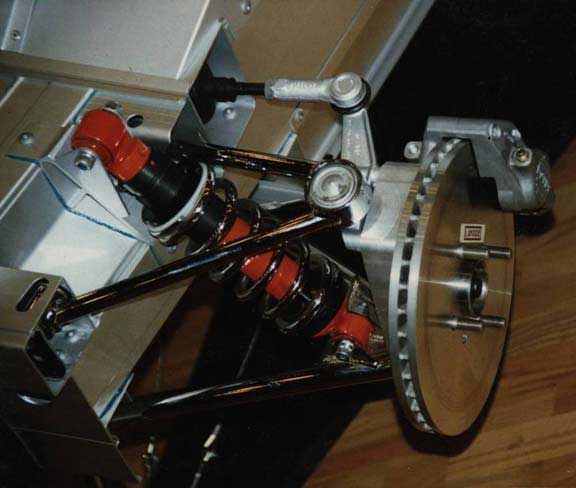
To keep the Elise’s weight down, the first cars were built with lightweight Metal Matrix Composite (MMC) brakes, made by the US-based Lanxide Corp from special silicon-carbide sintered aluminium. These rotors reduced the unsprung weight and rotating masses of the car and helped keep the kerb weight down to just 725kg. Sadly later cars were fitted with conventional brake discs to reduce costs and Lanxide went bust.
5 Design and Engineering
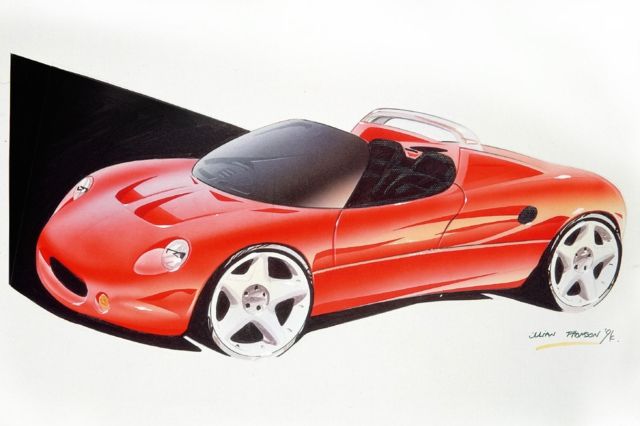
The first Elise was designed by Julian Thomson who is now Jaguar’s design head and engineered by Richard Rackham, with ride and handling polish added by Lotus’s legendary team, headed at that time by the towering talents of Roger Becker.
6. Just add lightness
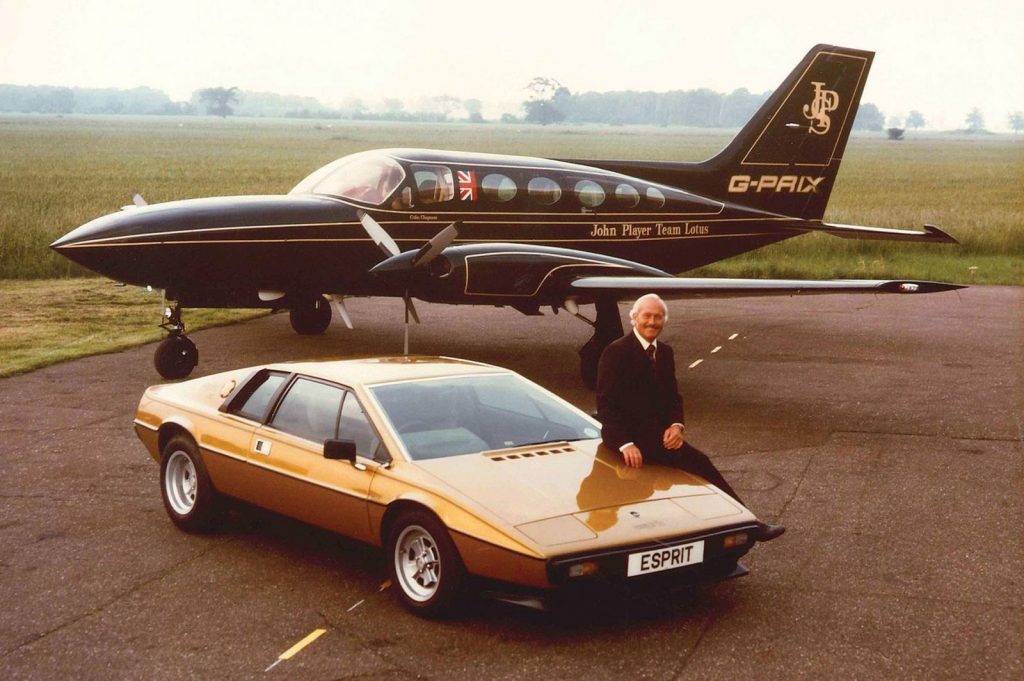
Despite what you might have read, “simplicate and add more lightness” is what Colin Chapman didn’t say. The quote actually came from Gordon Hooton, a designer who worked with Ford design executive William Stout. Nevertheless, Chapman was perhaps the greatest exponent of the idea, although some think he carried it a bit too far with Lotus’s famously flimsy hood design and in some older models, front-impact safety.
7. The early launch
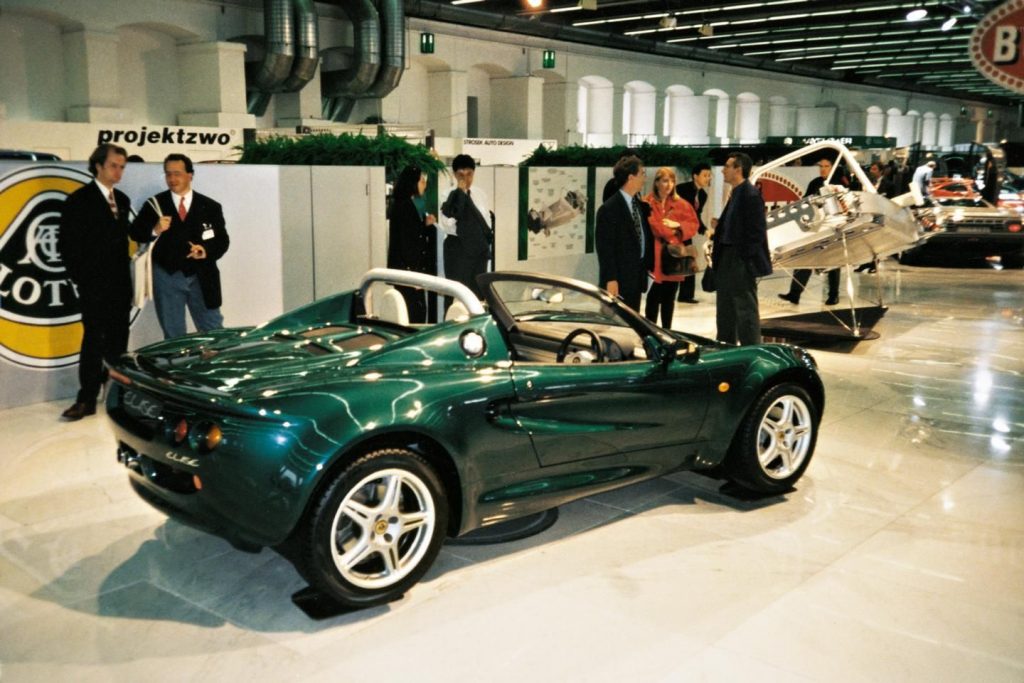
The original plan was to unveil the Elise at the London Motorfair in the middle of October 1995. Artioli, however, decided that he wanted the little car launched at the Frankfurt Show in German one month earlier. It meant that the official pictures had to be taken quickly and the car was spirited into a studio north of Norwich. The Frankfurt Show was a metallic green with a tan interior and the studio background was painted mustard yellow to honour the Lotus grand prix team colours as well as the mustard plants which are a speciality of Norfolk.
8. Do more with less
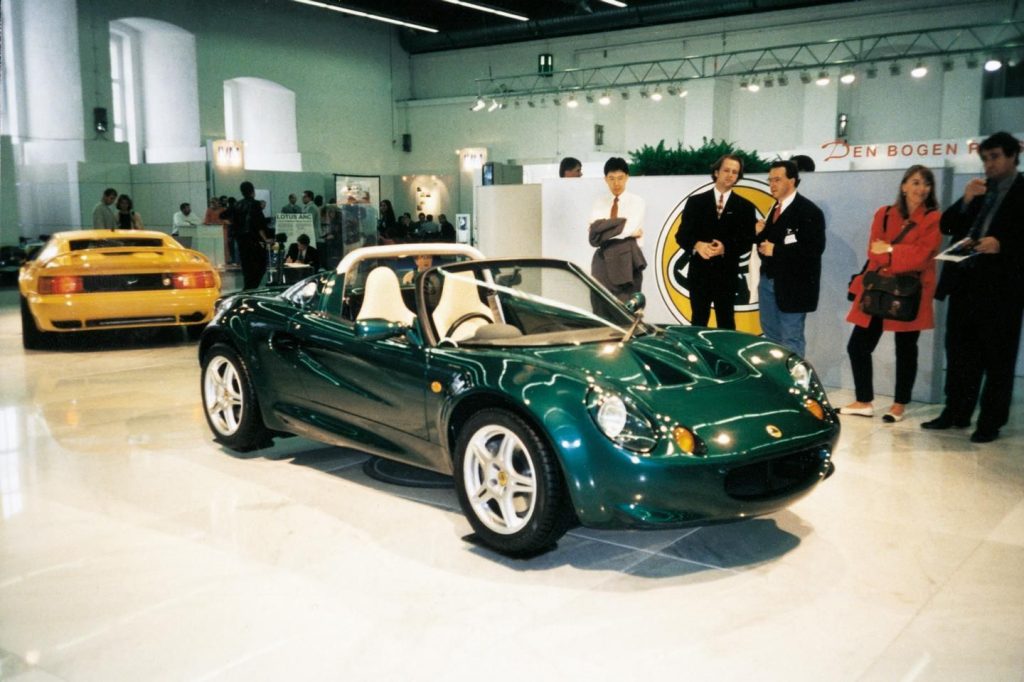
In the Series 1 Elise, the 1,796cc four-cylinder K-series produced just 118bhp and 122lb ft and was mated to a five-speed gearbox. Yet its 725kg kerb weight meant there was a lot less to push along, with the result that the little car would accelerate from 0-62mph in just 5.8sec, which in 1995 was brain frazzlingly fast. Top speed was claimed to be 126mph.

9. The specials
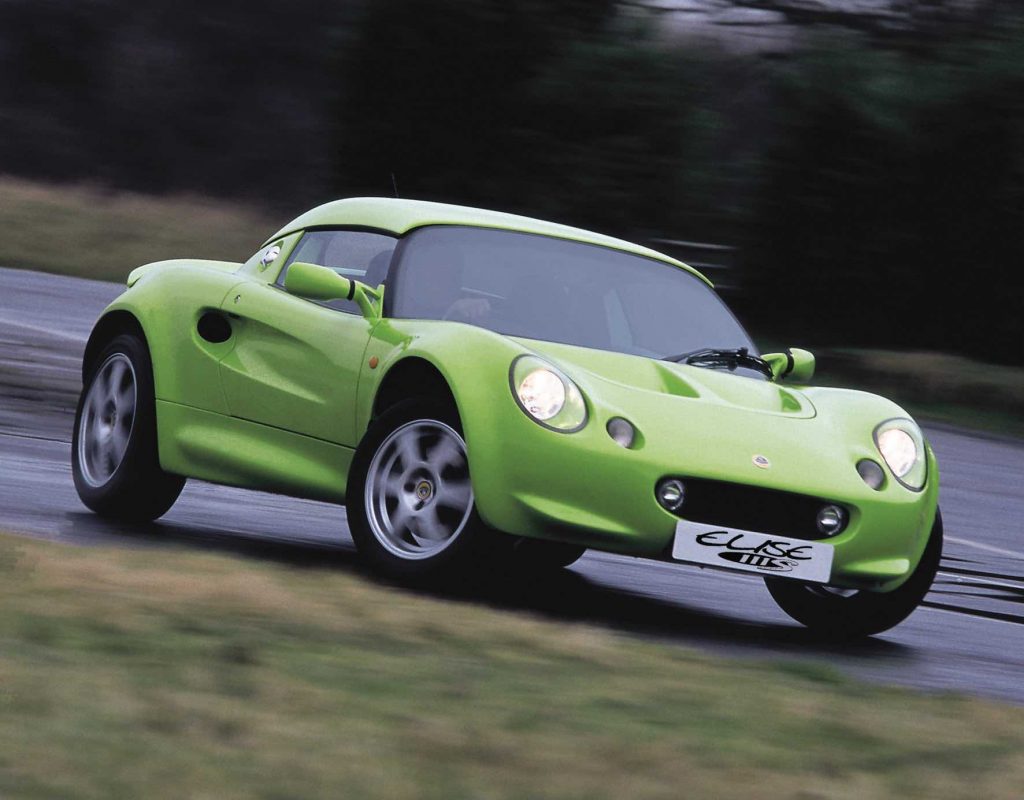
By 1999 Lotus has squeezed some more power out of the K-series for the 111S, which featured variable valve timing that resulted in 143bhp and a close ratio gearbox. The 111S also had a number of changes to trim and specification, along with special wheels and wheel-arch extensions. Many of the Elise aficianados consider these cars some of the finest-ever Elise models. There was also a roofless limited-edition special called the 340R launched in 2000, which weighed 701kg and had its K-series engine pushed to 177bhp.
10. Clamshells
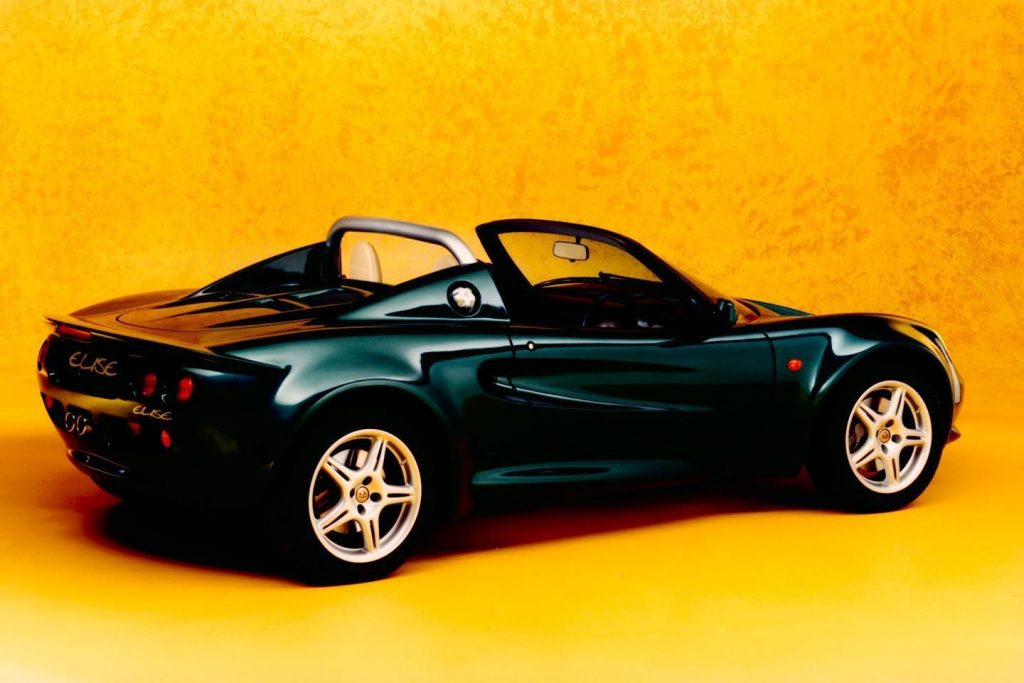
Lotus looked at cladding the first Elise with an aluminium coachwork, but the press tools would have been hideously expensive. Instead the car was constructed of two big clamshell glassfibre-composite mouldings; one front one rear, which are produced with a patented Lotus VARI (vacuum-assisted resin injection) process. One hefty bird strike could scrap an entire front end, though, and some unlucky owners were left waiting for a new clamshell after such an event.
11. Tyres
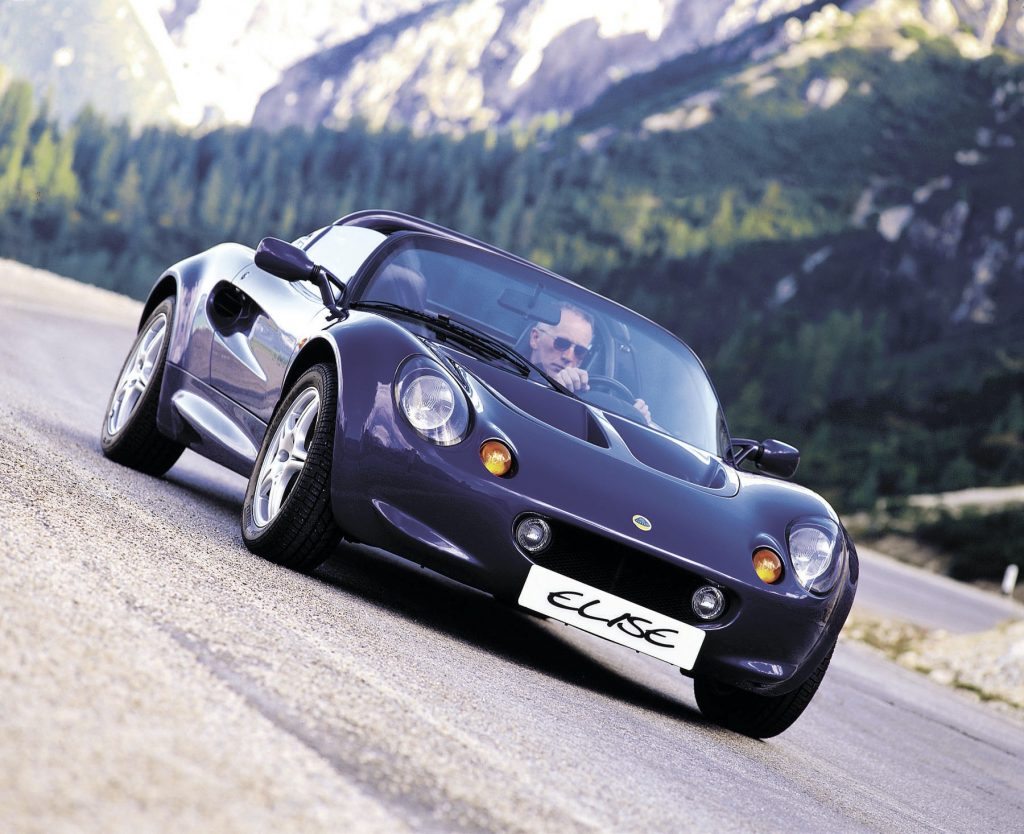
Pirelli P-Zero tyres were specified for the original S1 Elise; narrow at the front (185/55/15) and bigger and wider at the back (225/45/16), which meant you couldn’t carry a spare (not that there was room). They were OK, but they let go pretty quickly (see point 12), especially in the wet. In a road and test track evaluation by a senior Lotus road tester, which can be found on the internet, the Pirellis were pitted against a set of Yokahama Advan Neova LTS tyres slightly wider at the front (195/50/15), but the same size as the Pirellis at the rear, and a Bridgestone SO2 of similar dimensions. The Yoko’s walked it and were later specified as standard equipment for the S1 when Pirelli stopped making the exact size and compound of P-Zero.
12. Handle with care
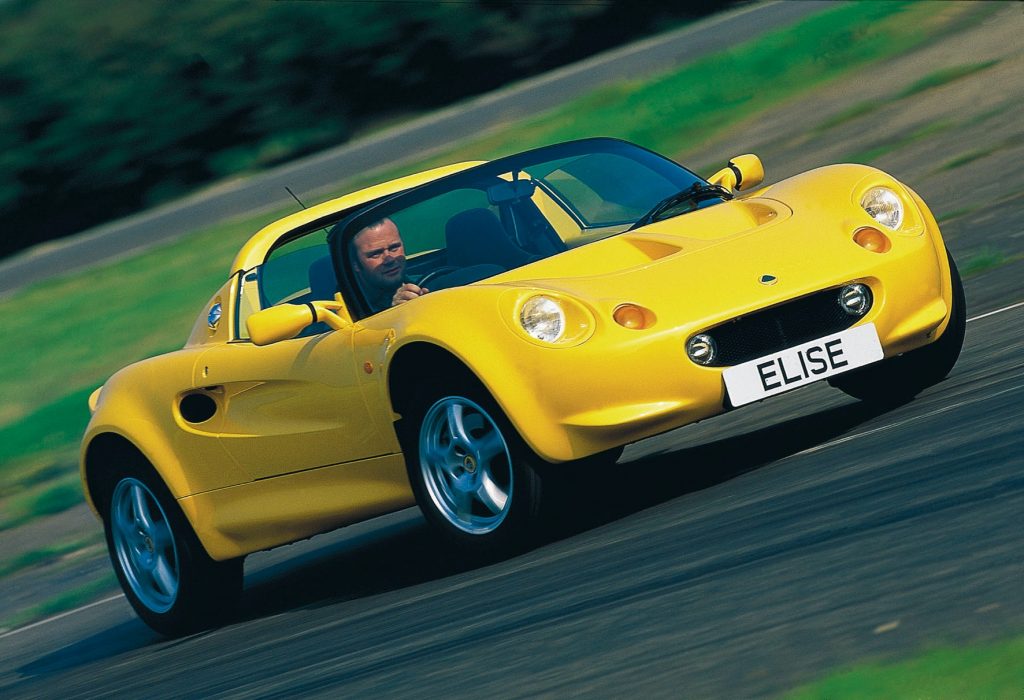
While early Elise models wowed owners and the press with their unassisted pin-sharp steering, intuitive-feeling brakes and superlative handling, you needed talent, speed and accuracy to catch a slide in an Elise and many didn’t. Experts like Rhoddy Harvey-Bailey soon came up with a series of suspension modifications which calmed the Elise’s spite and continue to do so.
13. Did Elise save the company?
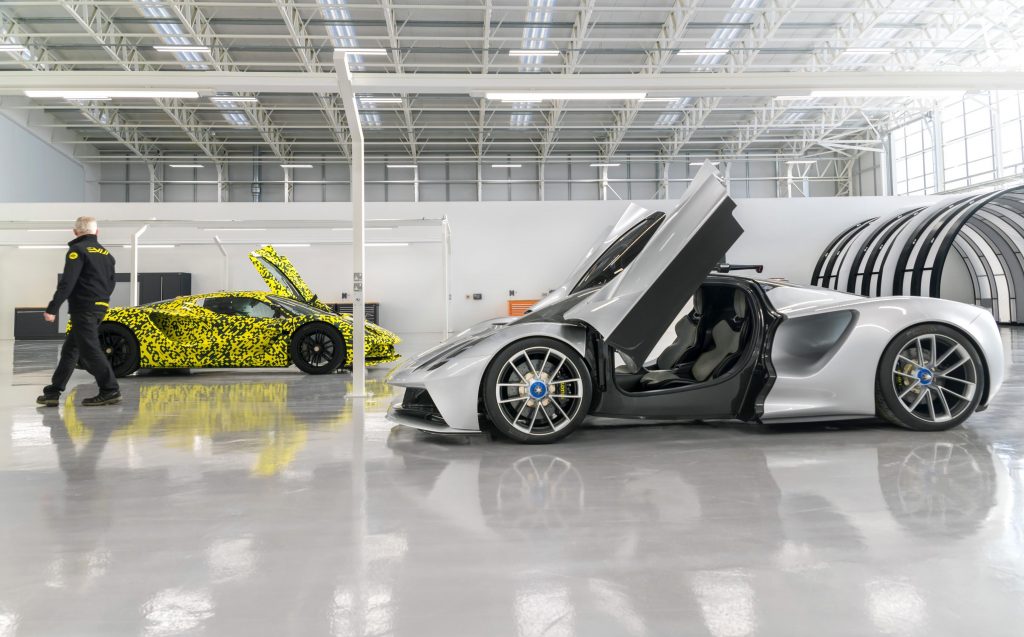
Good question. Certainly Lotus wasn’t exactly flush when it launched the Elise. Years of sales that barely slipped into four figures hadn’t helped, nor had a migration of clients from the engineering business concerned about possibly porous Chinese walls between Lotus and its owner General Motors. Developing the extruded aluminium platform for the Elise wasn’t cheap, there were concerns that it would turn out to be another Elan (see below) and it was expensive to build, but by its second year on sale, Lotus sold over 3,000 Elise models and between 1996 and 2000, Lotus sold over 10,000 S1 Elises, which made it the best-selling Lotus, ever.
14. What about the Elan M100?
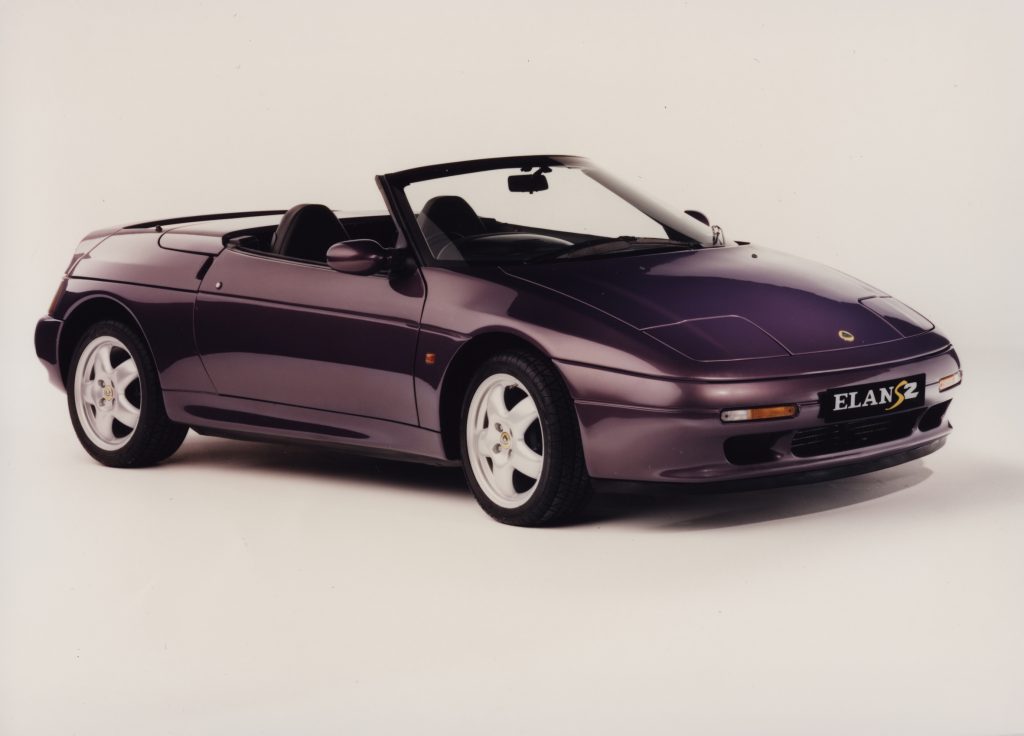
Developing an innovative and undoubtedly meritricious front-drive sports car to go up against Mazda’s MX-5 is a bit like invading Russia in the winter. The rear-driven, beautifully engineered and staggeringly reliable MX-5 has since gone on to become the world’s best-selling sports car – ironically it was developed with the original Sixties Lotus Elan in mind. Lotus’s Elan M100 (1989 to 1995), however, was a different beast. As well as driving the front wheels, it had a special ‘raft’ front suspension, used an Isuzu 1.6-litre turbo drivetrain and was topped off with Peter Stevens’ futuristic body design. Sales were slow and Lotus only sold the Elan officially for six years, though it later sold the rights to Kia, which produced a Kia Elan between 1996 and 1999. The Elan’s lack of success also presaged General Motors selling Lotus to Romano Artioli.
15. Series 2 Elise
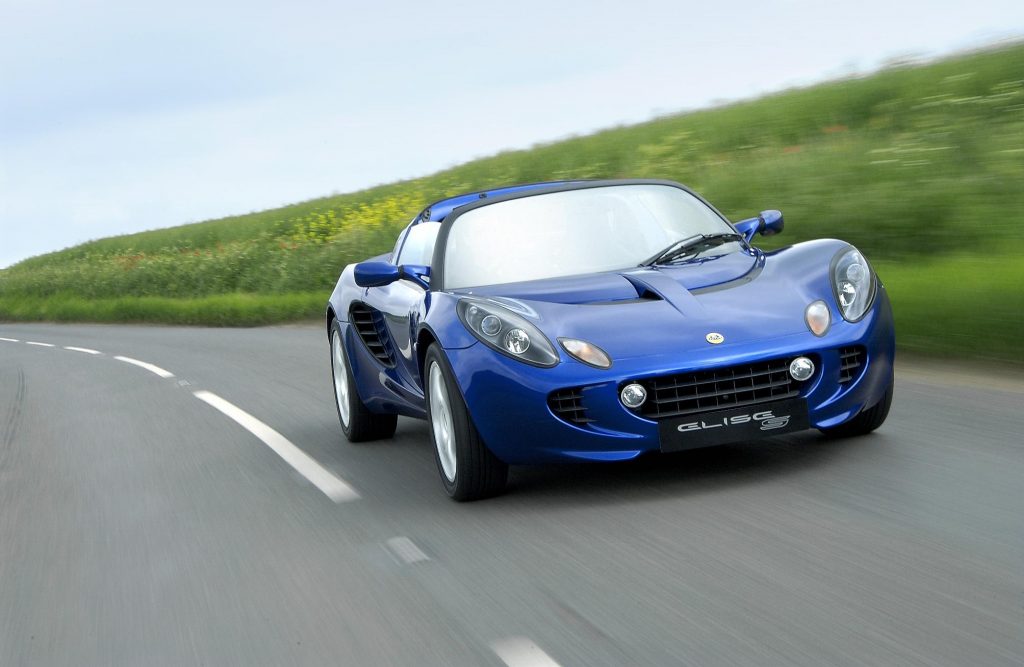
The S1 Elise wouldn’t pass European crash requirements after the 2000 model production year so Lotus needed to redesign the chassis and produce a gen-two model. General Motors offered to fund part of the development in return for allowing the company to use the chassis as a base for its own sports car project.
16. Toyota connection
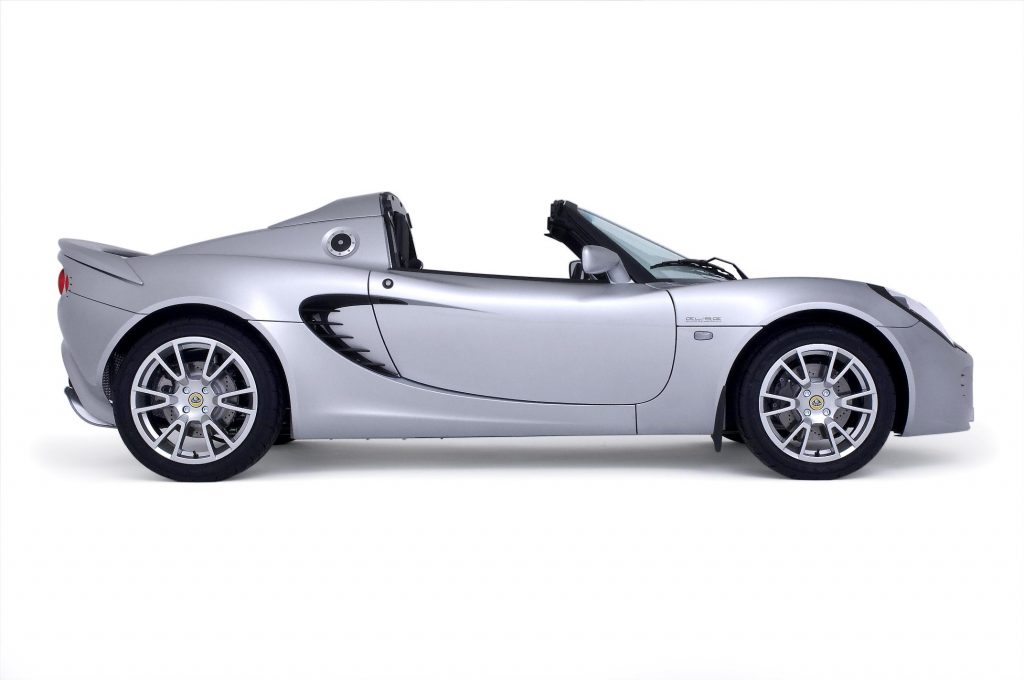
Lotus has had a long relationship with this Japanese giant, it even designed and built a 1,000bhp racing engine for Toyota which never saw competition. A Toyota twin-camshaft engine for Elise 111R arrived in 2004, and would later be supercharged, but Rover K-series engines continued to be used in some models alongside the Toyota unit all the way to the end of the decade.
17. Vauxhall/Opel connection
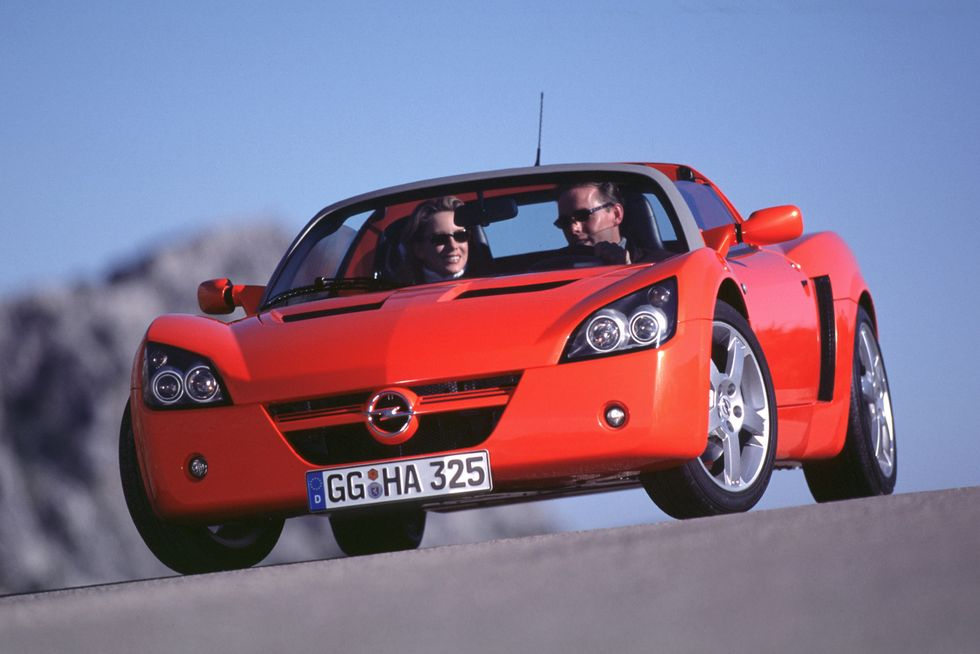
As part of the co-funding deal for the Series II Elise, General Motors was allowed access to the Elise’s bonded aluminium chassis technology. The first result was the Vauxhall VX220 and Opel Speedster developed mostly by Lotus and built at an expanded production facility at Hethel in Norfolk. The VX220 used a 145bhp, 2.2-litre four-cylinder Ecotec engine from the Vauxhall Astra (though a two-litre turbo engine was later offered) with coachwork designed by Niels Loeb and Martin Smith. It was sold between 2000 and 2005 and while it was feted by the press, but was not as good to drive as the Elise and was not considered a particularly profitable project for GM.
18. Lotus Exige
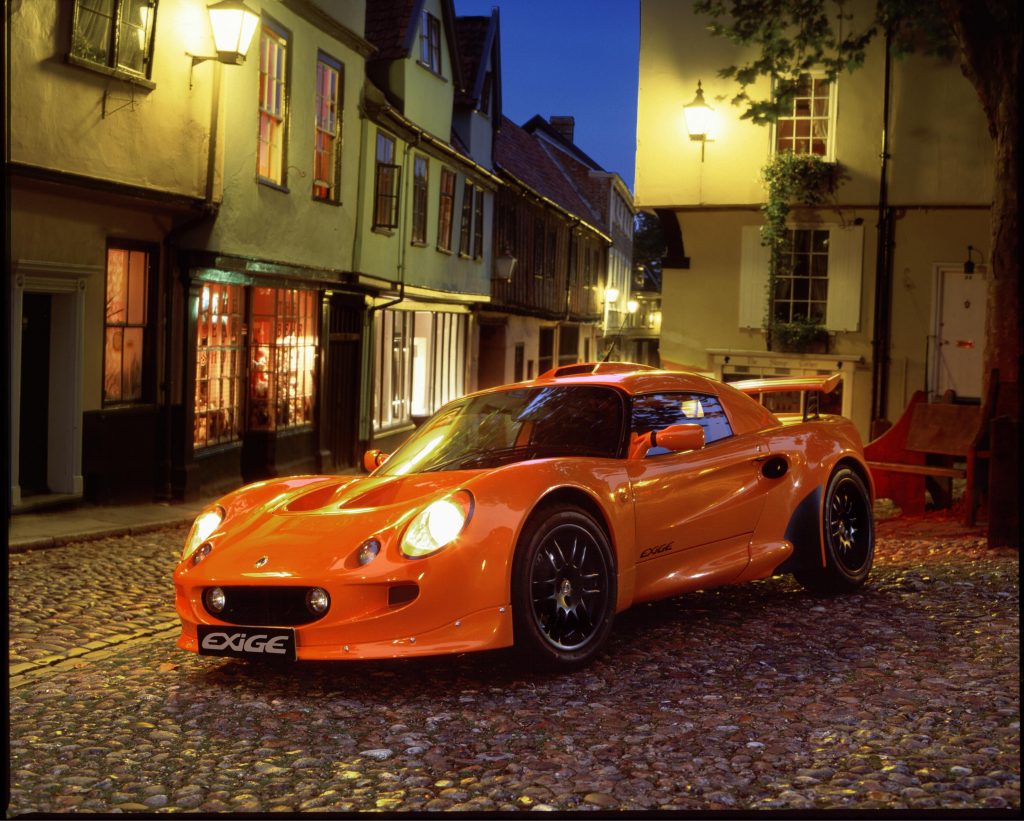
The Exige was originally a harder, coupé version of the Elise launched in 2000, with a VHPD (Very High Performance Derivative) tuned Rover K-series delivering 177bhp and 190bhp in track tune. Performance was a claimed top speed of 136mph with 0-62mph in 4.9sec. It has continued in production through various track- and race-based specials and three separate series and is the only Elise-based car to take a V6 engine.
19. Lotus 2-Eleven
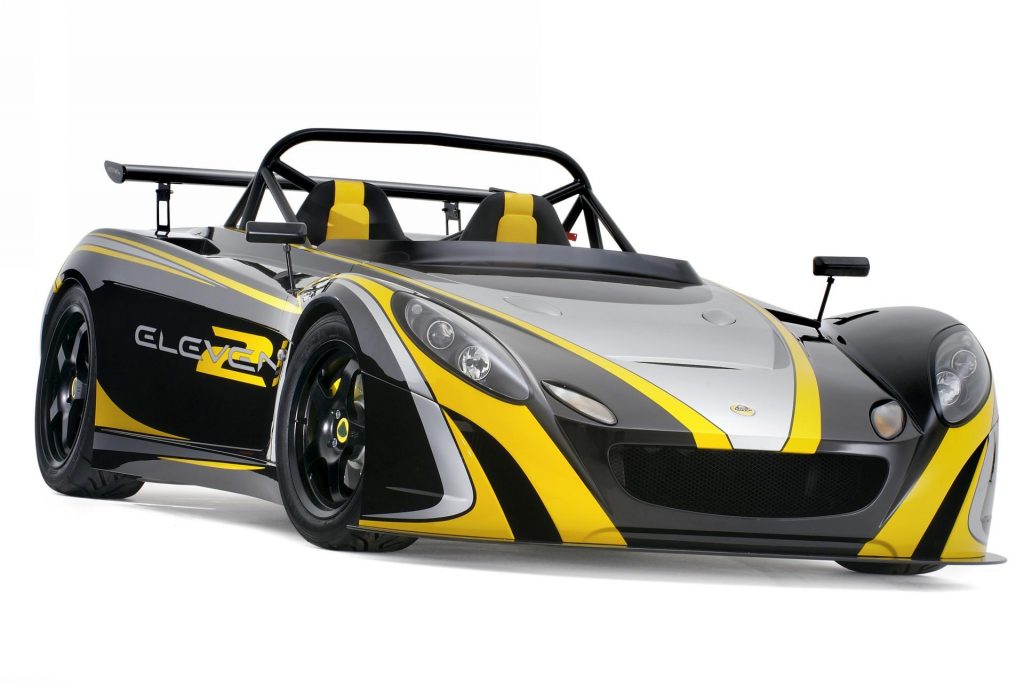
The 2-Eleven was an open-top roadster version of the Elise with a supercharged 1.8 Toyota engine, launched in 2007 and going out of production in 2011. It was intended principally as a track-day car. Weighing just 670kg, its 252bhp/178lb ft engine could sling shot the car from 0-60mph in 3.8sec and onto to a top speed of 150mph.
20. Tesla connection
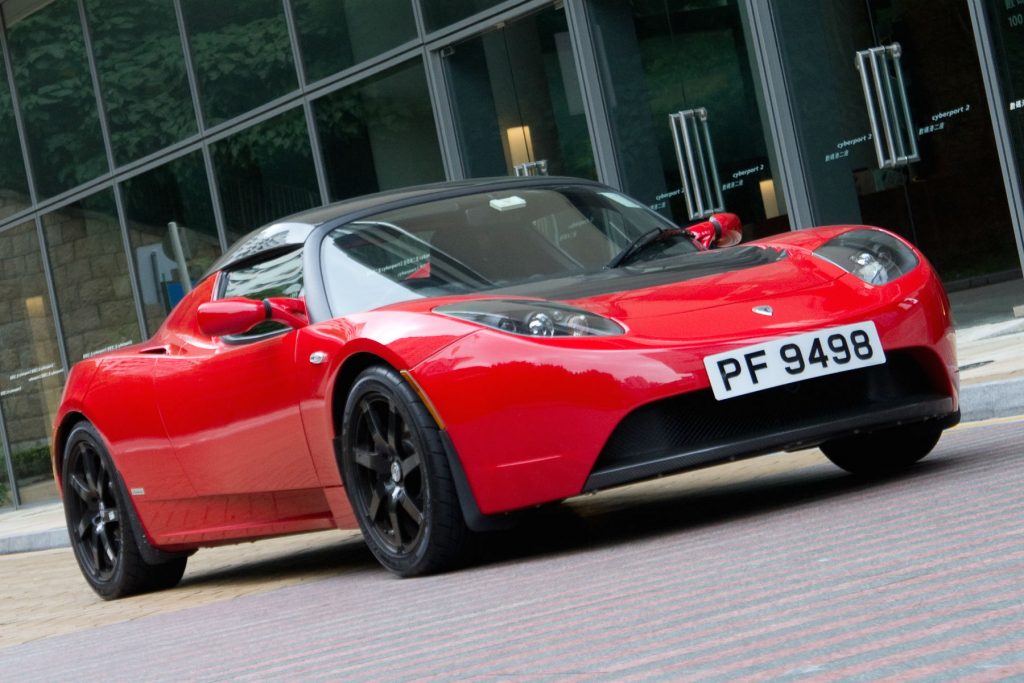
The Elise formed the basis for the first Muskmobile, the Tesla Roadster. In fact early assembly of this lithium-ion battery-powered Elise lookalike was at the Lotus factory at Hethel. Produced between 2008 and 2012, this first Tesla used a number of different batteries up to 288hp/295lb ft. While Tesla wanted to create a two-speed transmission for the car, development was problematic and it settled with a single-speed fixed-gear Borg Warner. The Tesla wasn’t the first battery Elise, however; between 1998 and 2003 Lotus collaborated with Zytek to produce a nickel-cadmium battery powered Elise.
21. Elise Series III
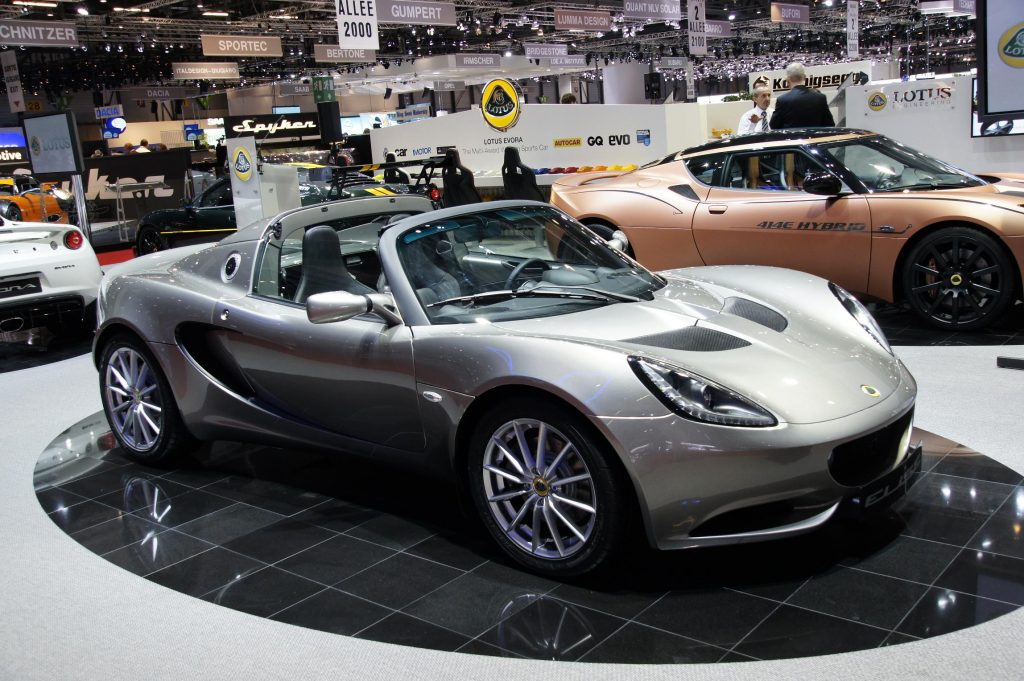
Launched in February 2010, the Series III was essentially a facelifted gen-two Elise with new single headlamp units. There was a 1.6-litre version for sale in Europe, but the base model in the UK had a 1.8-litre Toyota unit with a Magnuson supercharger which delivered 217bhp.
22. You can now import a Lotus Elise into America.
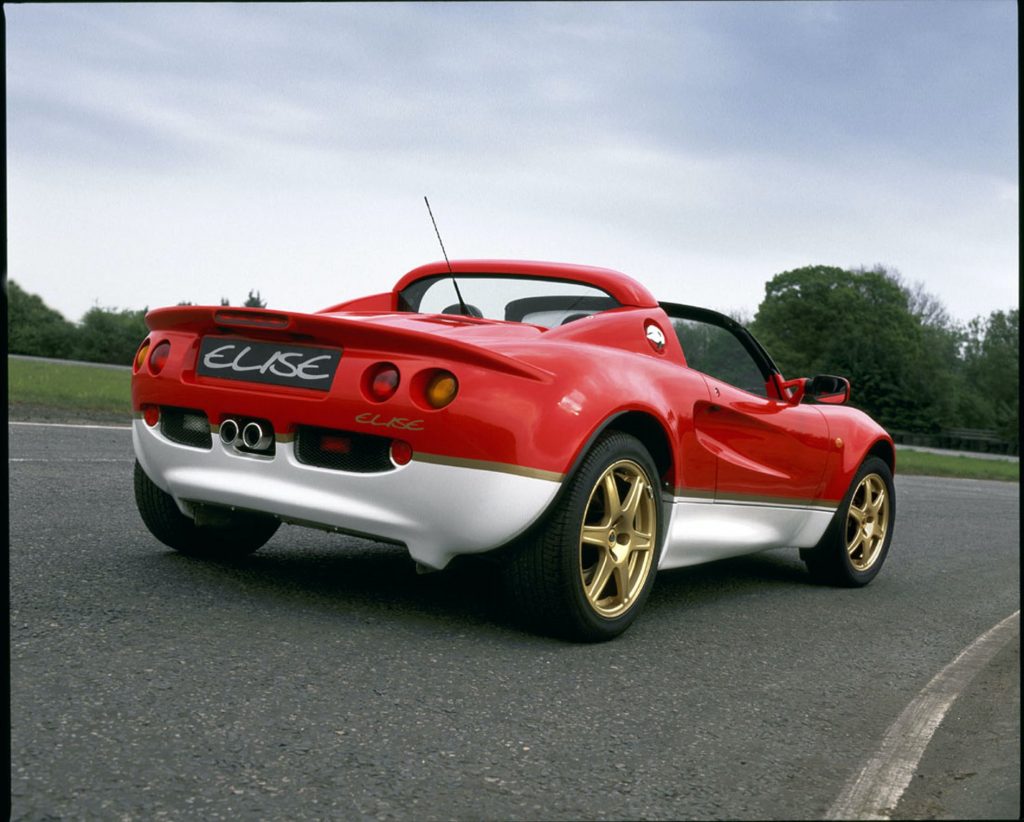
The Series II Elise was imported to the US, but there was no chance of getting the S1 through the Byzantine and myriad regulations and forms for imports to the States. Since 25 years has now elapsed, however, the Department of Transportation gives owners exemption from (most) of these.
23. Never a cheap car
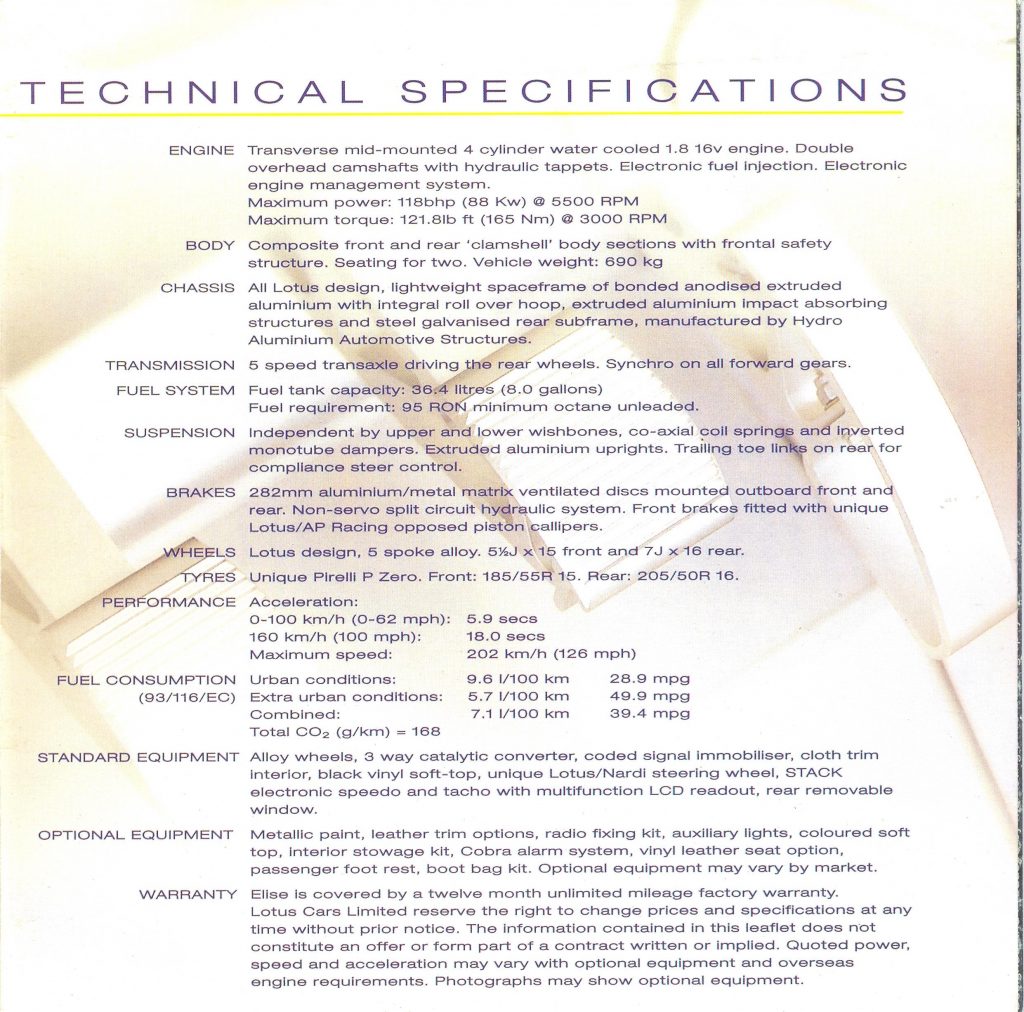
At £18,950 in 1996, the Bank of England inflation calculator shows that the equivalent value in 2019 would be £35,839.53. These days the cheapest Elise will set you back £44,640.
24. The ill-fated GT1 race car
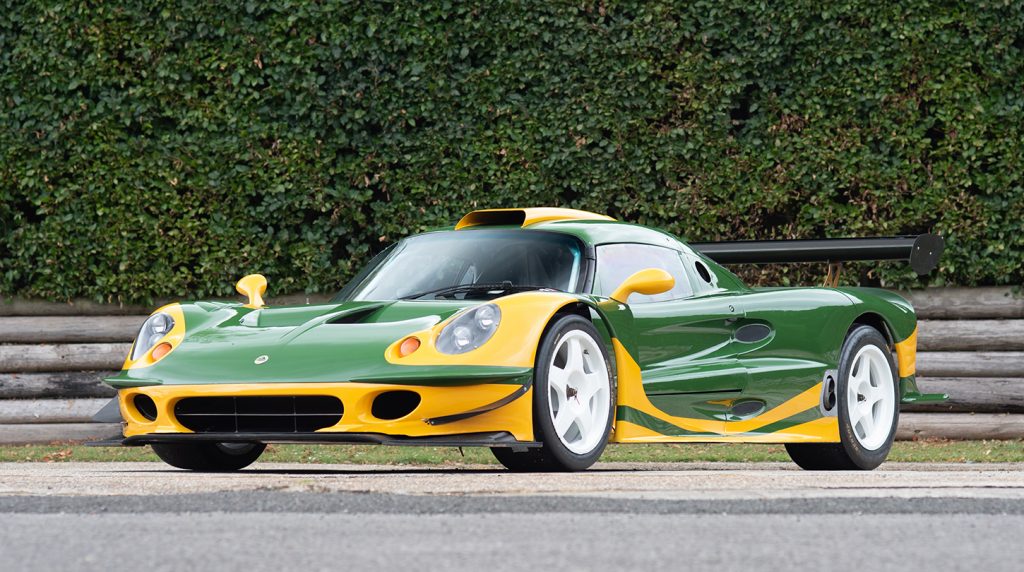
Lotus needed a replacement for the elderly Esprit GT1 and turned to the Elise as a platform to build on. Compared with factory teams from Mercedes and Porsche, Lotus was underfunded and lacked the resource to make much of a dent in the FIA GT series. Its own V8, from the Esprit, and a Chevrolet lump, were used. Reliability was not a strong point.
25. Elise replacement?
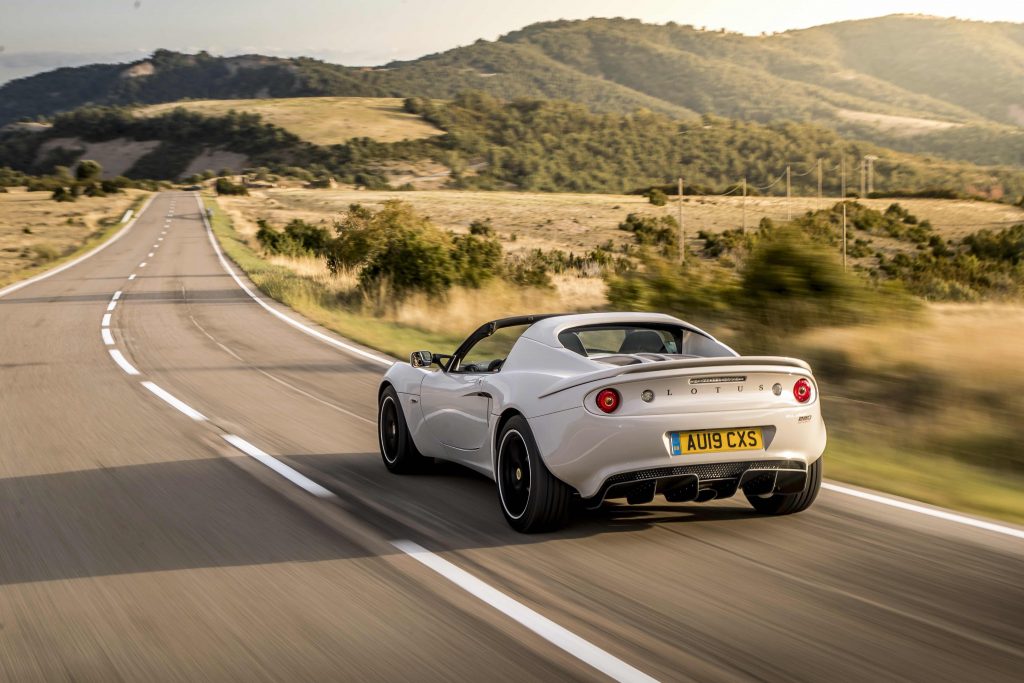
We’re still waiting for definitive news on this, although a new Evora-based car is expected from Lotus before we see the full range of all-new cars based around a similarly designed new chassis floorpan in 2022 or 2023.
Insiders are expressing concern, however, that under new owner Chinese manufacturing giant, Geely, development of these new cars has been slow. A quarter of a century on from my driving out of Hethel in one of the first Elise models for a test, it remains on sale.










The stock rear pirelli tyres were 205/50/16, the 225s were on the 111s/sprint.
The 2.2 vx220 made 144hp, not 220.
Y’all forget the reborn Europa (type 121) and Europa S!
Based around the later 2 litre turbo VX220 engine (apparently as Lotus had an oversupply problem from GM as a result of the series 2 Elise deal), it was way better looking than the VX and a very civilised and capable sports car, complete with aircon and other ‘luxuries’. It sold in teaspoonfuls, but arguably was a proof of concept for the Evora. I loved mine, but boy did it creak inside.
Great article btw